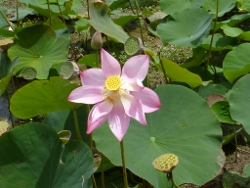|
|
Plants, animals, soils, water and more (components)The various parts of an ecosystem are called components. Ecosystem components include the physical, chemical and biological parts that make up the environment. Examples include the water within a wetland, the chemicals within that water, the vegetation types at a wetland, animals and microbes that live in a wetland, the geology, terrain, soils or sediment of a wetland, or the wetland itself (adapted from[2][3][1]). Understanding wetland ecology involves identifying the components of a wetland, and how these components function and interact, at the ecosystem scale, and within the context of the surrounding landscape or seascape. The interaction between the components and processes provides the ecosystem services that people value. Components in the landscapeTo understand where components are in the landscape, components are organised into the following themes:
Use the search box below to explore the wetland components: Search matches * of * pages
References
Last updated: 6 October 2023 This page should be cited as: Department of Environment, Science and Innovation, Queensland (2023) Plants, animals, soils, water and more (components), WetlandInfo website, accessed 8 May 2025. Available at: https://wetlandinfo.des.qld.gov.au/wetlands/ecology/components/ |

 — Department of the Environment, Tourism, Science and Innovation
— Department of the Environment, Tourism, Science and Innovation


